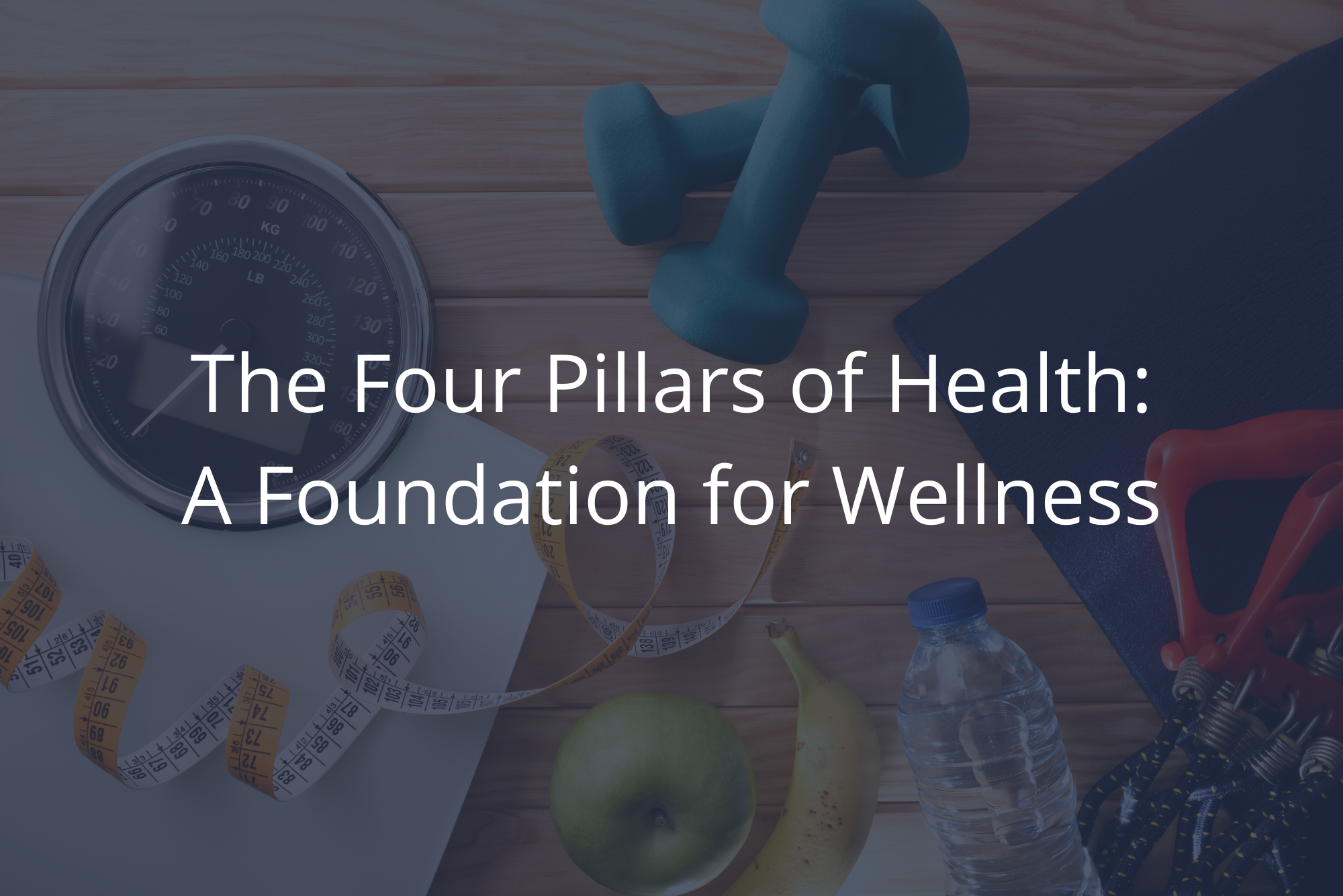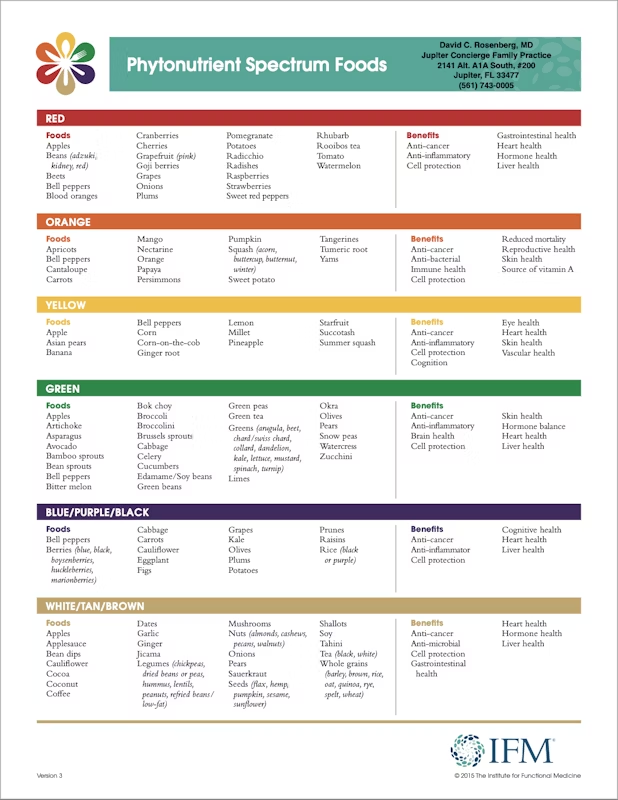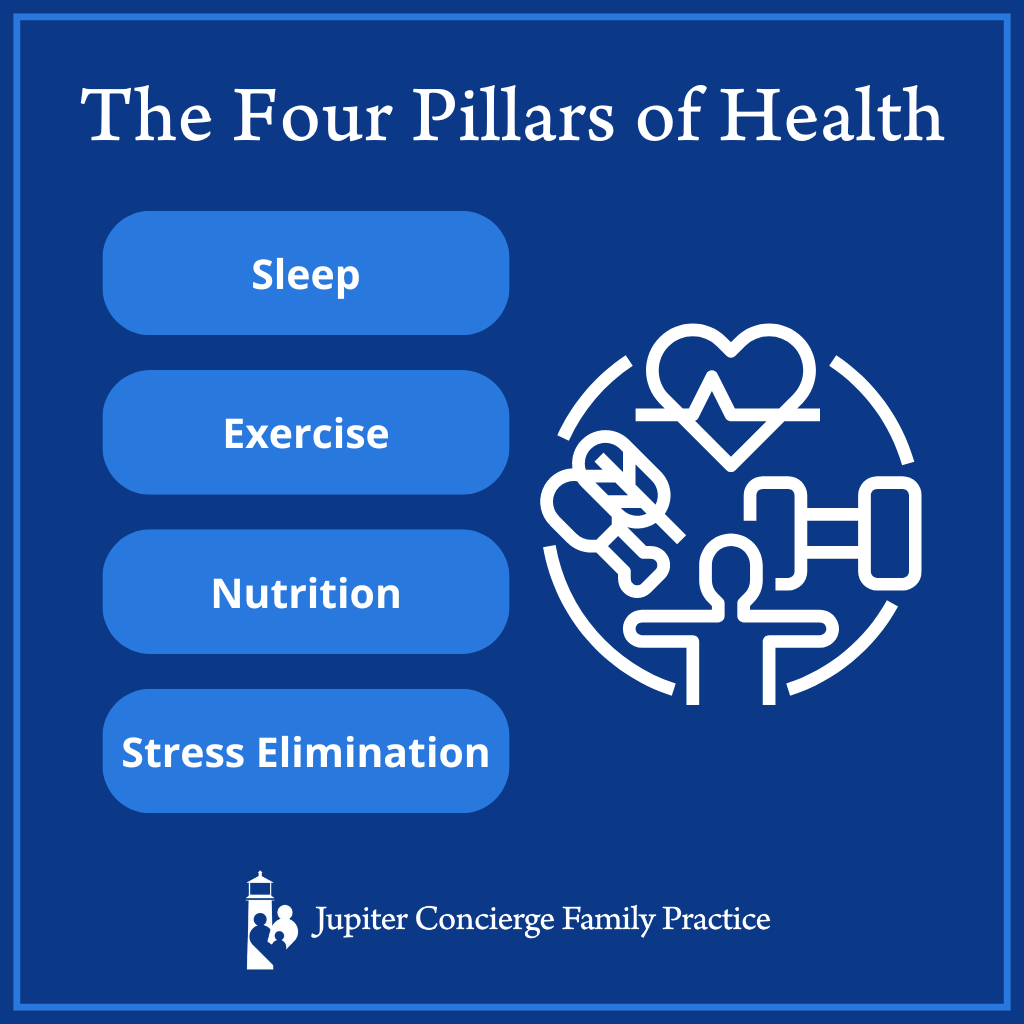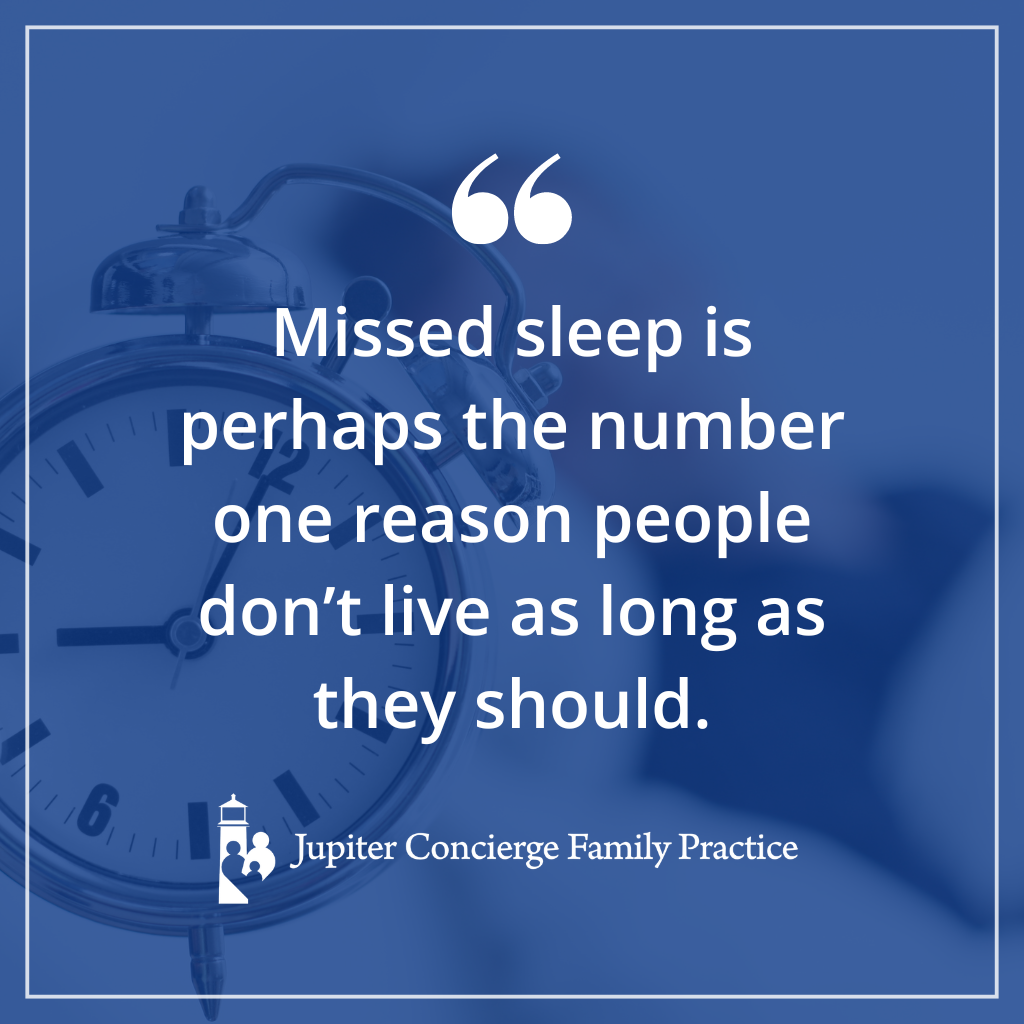
In our fast-paced world, it’s tempting to seek an all-in-one, instant silver bullet for health issues. But let me share a fundamental credo that I’ve found true in both my personal life and medical practice: There’s no free lunch.
This applies to all aspects of life, including health. Every solution comes with a cost, whether that be financial discomfort, inconvenience, or something else. All meaningful improvement in health, therefore, requires some level of sacrifice or effort.
This is diametrically opposed to the “pill for an ill” philosophy, which asks, What’s a quick fix for my problem?
The answer: There is none.
Let’s briefly consider a scenario in which any competent physician would prescribe a pill: a serious infection.
Perhaps you injured your arm and developed a severe infection. Initially, you need intravenous antibiotics in a hospital setting, fighting the infection as directly and potently as possible. Once the infection comes under control, you may continue on an oral antibiotic to keep it in check.
While this seems like a classic and very reasonable “pill for an ill” case, remember that the antibiotic isn’t the only factor in your recovery. You also need to focus on proper wound care, ensure you’re eating right to support healing, and manage your stress levels. The pill is just one part of a comprehensive treatment plan.
Similarly, if you have dangerously high blood pressure, immediate medication might be necessary to prevent a stroke. But the goal isn’t to keep you on that medication indefinitely. By implementing what I call the Four Pillars of Health, we’re often able to reduce or even eliminate the need for that medication after a few weeks or months.
Real, lasting health improvements come from a more comprehensive strategy than simply throwing pills at every ailment. That’s where the Four Pillars of Health come into play. These pillars form the foundation not just for living a long time, but also for living well during the time you have.
In my practice, I consider these key areas to comprise the Four Pillars of Health: Sleep, Exercise, Nutrition, and Stress Elimination.
Let’s explore each of these pillars and how they contribute to a healthier, more vibrant life.
The Four Pillars of Health: They Just Make SENSE
The Four Pillars of Health aren’t complicated. In fact, they’re so logical you can remember them with one simple acronym: SENSE.
- Sleep
- Exercise
- Nutrition
- Stress Elimination
By considering these health pillars and implementing habits to support them in your daily life, you’ll free yourself from relying solely on silver bullets and maintain a much stronger, healthier you.
Sleep: Your Body’s Nightly Reset
Sleep is a tricky yet crucial component of healthy living. It’s tricky because you don’t necessarily notice sleep’s contributions to your health, making it easy to offer up sleep as the first sacrifice on the altar of a busy schedule. But while missing sleep may save you time in the short term, it also shaves time off your long term.
Missed sleep is perhaps the number one reason people don’t live as long as they should.
Quality sleep is crucial for optimal bodily function, supporting a robust immune system, good digestion, and a healthy brain. During sleep, our bodies repair daily wear and tear, and we get our nightly reboot for body and mind.
Most adults need between 7 and 10 hours of sleep per night. To promote better sleep, I suggest developing a sleep-inducing nighttime routine and making your bedroom into a full-on sleep sanctuary. Some tips for your routine:
- Go to bed by 10 p.m. each night.
- Finish up all work one hour (or two!) before lights out.
- Stop streaming or scrolling before your eyelids droop to avoid stimulating your brain and delaying sleep.
- Eat a high-protein snack a few hours before bed.
- Try a relaxing activity, like a hot shower, right before bed.
And some tips for your bedroom:
- Make your bedroom as dark as possible.
- Keep the room cool, at 70°F or below.
- Keep all electronics away from your bed — including your phone and alarm clock.
- Avoid loud alarm clocks.
- Reserve your bed for sleeping and intimacy to train your nervous system to associate it with relaxation.
- If your partner snores, consider sleeping in separate bedrooms.
By giving yourself an enjoyable, repeatable evening routine, you train your body and mind to relax and reboot with greater ease each night.
Exercise: Keep Moving, Stay Strong
Developing a regular exercise routine is one of the most impactful actions you can take to establish a strong long-term foundation for your health. In fact, I consider exercise to be perhaps the most important of the Four Pillars of Health — because when you exercise regularly, every other pillar gets easier.
For anyone cringing at mental images of massive kettlebells or marathon finish lines, I have good news: Exercise simply means moving.
Whether that means walking in your neighborhood, lifting light weights, playing pickleball, or training for a 5K, productive exercise means moving your body every day. Equally important, however, is finding the right exercise for you.
Depending on your current fitness level, you may need to start slowly to avoid injuring yourself. Remember, injuries from proceeding too quickly in a new or intense exercise routine actually slow your progress in the long run. The goal here isn’t immediate results; it’s forming a habit for long-term wellness.
One other consideration: You need to like whatever exercise you choose. Trying to force yourself to engage in exercise you hate every day puts an unnecessary roadblock in your routine. Instead, look for activities you enjoy so you’ll be able to establish a daily habit more easily.
When developing a well-rounded exercise plan, I recommend focusing on a combination of four key areas:
- Cardio-Respiratory Fitness: To condition your heart and lungs, aim for 30 minutes of aerobic activity, three times a week. This could be as simple as a brisk 1.5-mile walk in 25 minutes.
- Muscle Tone: Engage in strength training for about 20 minutes, three times weekly. This doesn’t necessarily mean heavy weightlifting; bodyweight exercises like push-ups, squats, calisthenics, or even vigorous walking are also effective.
- Flexibility: Dedicate 10 minutes daily to stretching major muscle groups. While it may seem less important than other forms of exercise, stretching forms the yin to strengthening’s yang. Tight ligaments and tendons contribute to muscle tears, and weak muscles contribute to ligament and tendon damage.
- Balance: As we age, our balance naturally declines. To establish a strong foundation for long-term stability, incorporate five minutes of simple balance exercises into your day. Yoga, for example, offers many poses that focus on improving balance, such as tree pose.
Nutrition: Fuel Your Body Right
The old adage “you are what you eat” holds more truth than we often realize. A balanced, colorful diet that includes healthy sources of all six essential nutrients is crucial for optimal health.
Why “colorful”? One wonderful feature of fruits and vegetables is that their varied colors actually represent their varied nutrients. For instance, the orange in carrots comes from beta-carotene, while the red in tomatoes results from lycopene. By varying the colors on your plate, you ensure a diverse nutrient intake that promotes overall health.
The chart below breaks down the spectrum of colorful, nutrient-rich produce and some of their benefits:

For a truly healthy nutritional foundation, aim to incorporate 7–10 servings of varied fruits and vegetables into your day. If you find that number daunting, don’t panic. Start by adding one or two more servings than you’re used to, and work up from there. With a little planning, you can build a habit of “eating the rainbow” each day.
Stress Elimination: Minimizing Life’s Pressures
While many talk about managing stress, I prefer to focus on eliminating stress where possible. Some stressors are unavoidable, but many can be reduced or removed from our lives. Once we’ve eliminated what’s possible, we can focus on managing the stress that remains.
I find the following categories helpful for assessing stress:
Emotional/Spiritual Stress
Often, we know certain factors cause us stress: negative people, dysfunctional relationships, and unrealistic expectations, to name a few. Rather than trying to “manage” the stress brought on by these elements, our lives benefit enormously from identifying and avoiding them as much as possible.
While this doesn’t mean avoiding all of life’s challenges, it does mean removing consistently unhealthy influences from your daily life. For instance, you may have to interact with a negative person occasionally, but you don’t have to put yourself in regular contact with such a person. Or, though all relationships have challenges, you may need to remove yourself from a relationship that has become dysfunctional.
Food/Physical Stress
Another less obvious type of stress is that which comes from unhealthy foods, toxins, and pollutants. These all bring stress to our minds and bodies, even when we aren’t aware.
Take a mindful approach to contaminants in your diet and surroundings to avoid introducing unnecessary stressors when possible. For example, opt for whole foods over processed ones, avoid plastic food packaging and storage, and minimize exposure to chemicals and allergens.
Hidden Stress
Hidden stress involves underlying health issues or sublimated emotional burdens. You don’t know they exist, but they’re lurking in the background and gumming up the works. Regular check-ups and self-reflection can help uncover and address these.
Hidden stress may be emotional or environmental stressors you’ve sublimated as a form of “management.” If you can identify them, then you can dismiss them from your life.
Hidden stress may include diseases or illnesses you don’t know you have. An open and robust relationship with your physician will help to identify and address these stressors early. Regular screenings, like mammograms and PSA testing, check for serious issues like cancer. For more subtle issues, functional medicine testing helps uncover less obvious burdens so we can mitigate their impact.
How to Manage When You Must
For the unavoidable stressors left in your life, consider incorporating a meditation practice to assist with management. Even three minutes daily can significantly improve your quality of life and overall health.
You may imagine meditation to involve a lot of humming, incense, and floor cushions, but the truth is meditation can be quite simple:
- Find a quiet, comfortable space to sit.
- Focus using deep breathing.
- Notice how every part of your body feels.
- Be kind to yourself as you practice.
- Reflect on how you feel afterward.
Meditation takes many forms; there’s no one right way. Aim to find what works for you.
Personalize the Four Pillars of Health for You
The truth is, there’s no one-size-fits-all or silver bullet approach to health and wellness. Everyone has personal preferences, and those personal preferences dictate how compliant we’ll be with our chosen routines.
The key to creating sustainable health strategies using the Four Pillars of Health is to personalize your choices according to your preferences. Otherwise, you’re fighting an uphill battle fraught with disappointment and discouragement.
Let’s look at some brief examples for each pillar:
- Sleep: Your sleep needs are as individual as you are. Some people thrive on 7 hours of sleep, while others need a full 10 to feel their best. Pay attention to what your body tells you. Do you sleep better in complete darkness, or do you require some background noise? Do you need to address any health issues disrupting your sleep, such as a hormonal imbalance or frequent nighttime bathroom trips?
- Exercise: I’ll be the first to admit that I’ve never been a huge fan of traditional exercise. However, I’ve found ways to stay active that I genuinely enjoy, like snow skiing and playing tennis. The key is to find activities that motivate you. Maybe it’s the desire to keep up with your current or future grandchildren, or perhaps it’s the goal of mastering a new sport. When you connect your exercise routine to something meaningful in your life, you’re much more likely to stick with it.
- Nutrition: Eating well isn’t just about fueling your body — it’s also a social experience. In our culture, food often lies at the center of social interactions. The challenge is to make these social eating experiences align with our health goals. Try to surround yourself with people who also prioritize healthy eating. You’ll find it’s much easier to make nutritious choices when those around you are doing the same. Remember, balance is key. The occasional indulgence won’t derail your health, but consistently making healthy choices in social settings will significantly impact your overall well-being.
- Stress Elimination: Most people find themselves happier when they surround themselves with people who also prioritize a low-stress lifestyle. Take note of the unnecessary sources of stress in your life. You’ll likely find that when you actively avoid or remove yourself from stressful situations that don’t serve you, you’ll look back with relief and satisfaction at your decision.
The beauty of a personalized approach to the Four Pillars of Health is that it allows you to create a lifestyle that’s not just healthy, but also enjoyable and sustainable. It’s about finding what works for you — what motivates you, what brings you joy, and what aligns with your personal goals and values.
The Four Pillars of Health: Final Thoughts
By embracing a personalized approach to the Four Pillars of Health, you’re not just working toward better health — you’re paving the way for a more fulfilling, energetic, and joyful future.
Remember, small, consistent changes lead to significant improvements in overall well-being. And the habits you establish today will lay a solid foundation for health and wellness into middle age and beyond!

Dr. David Rosenberg
Dr. Rosenberg is a board-certified Family Physician who obtained a BS in Chemistry at Georgia's Mercer University in 1983 and a medical degree from the University of Miami in 1988. He completed his residency in Family Medicine at The Washington Hospital in Washington, Pennsylvania, in 1991 and then practiced Emergency Medicine at Palm Beach Gardens Medical Center for two years. In 1993 he started private practice in Jupiter.
Dr. Rosenberg has been married to his wife Mary for 38 years and they have three grown children together. Some of his interests include being a huge baseball fan, sailing, snow skiing, self-development, and learning to play piano.


